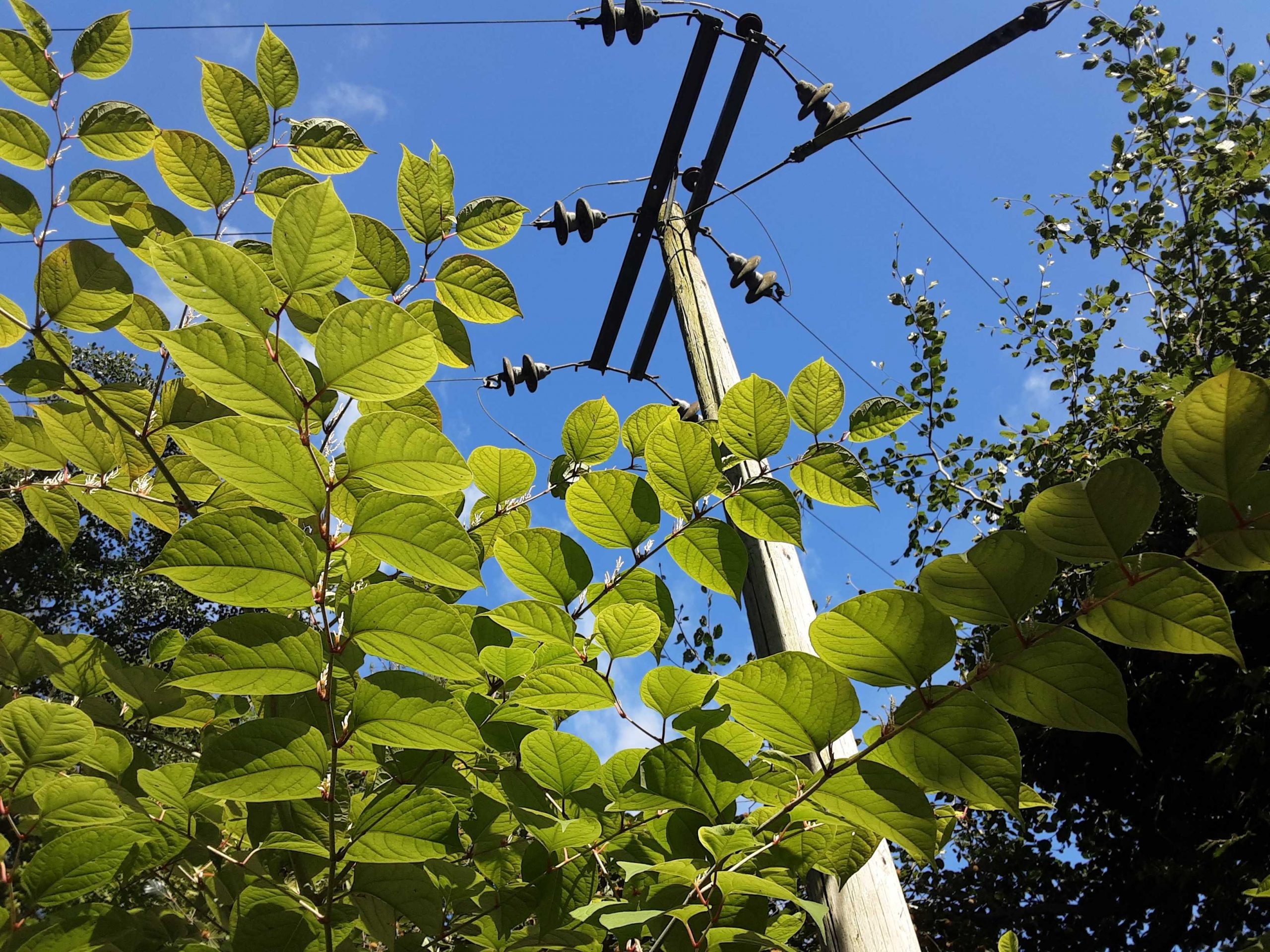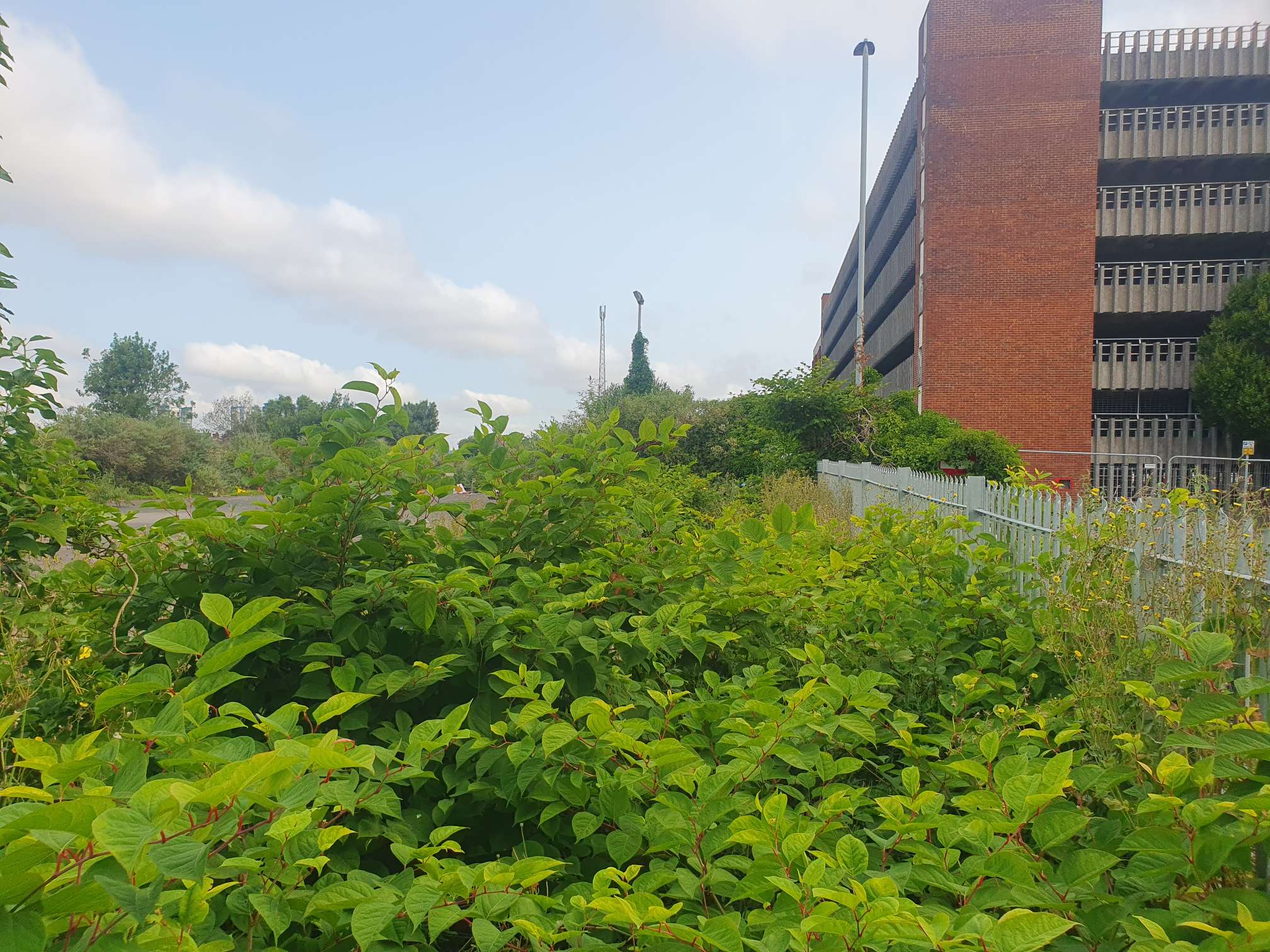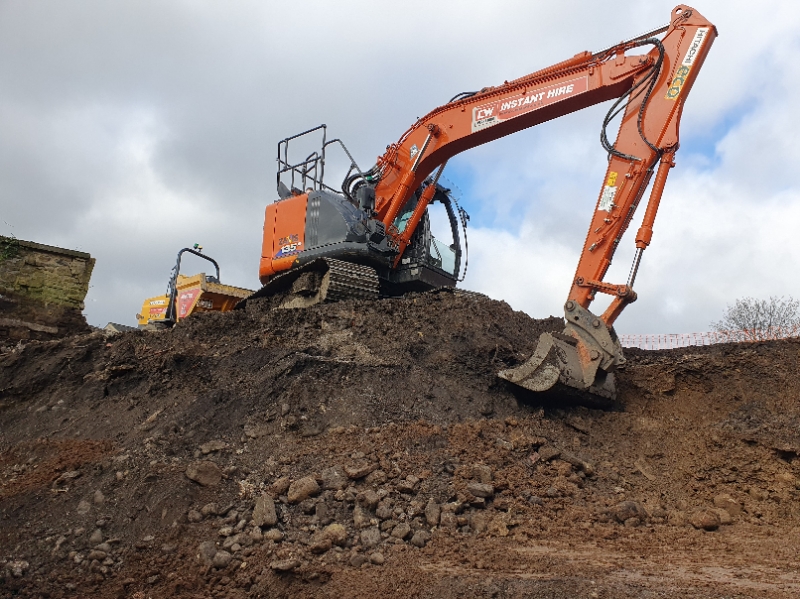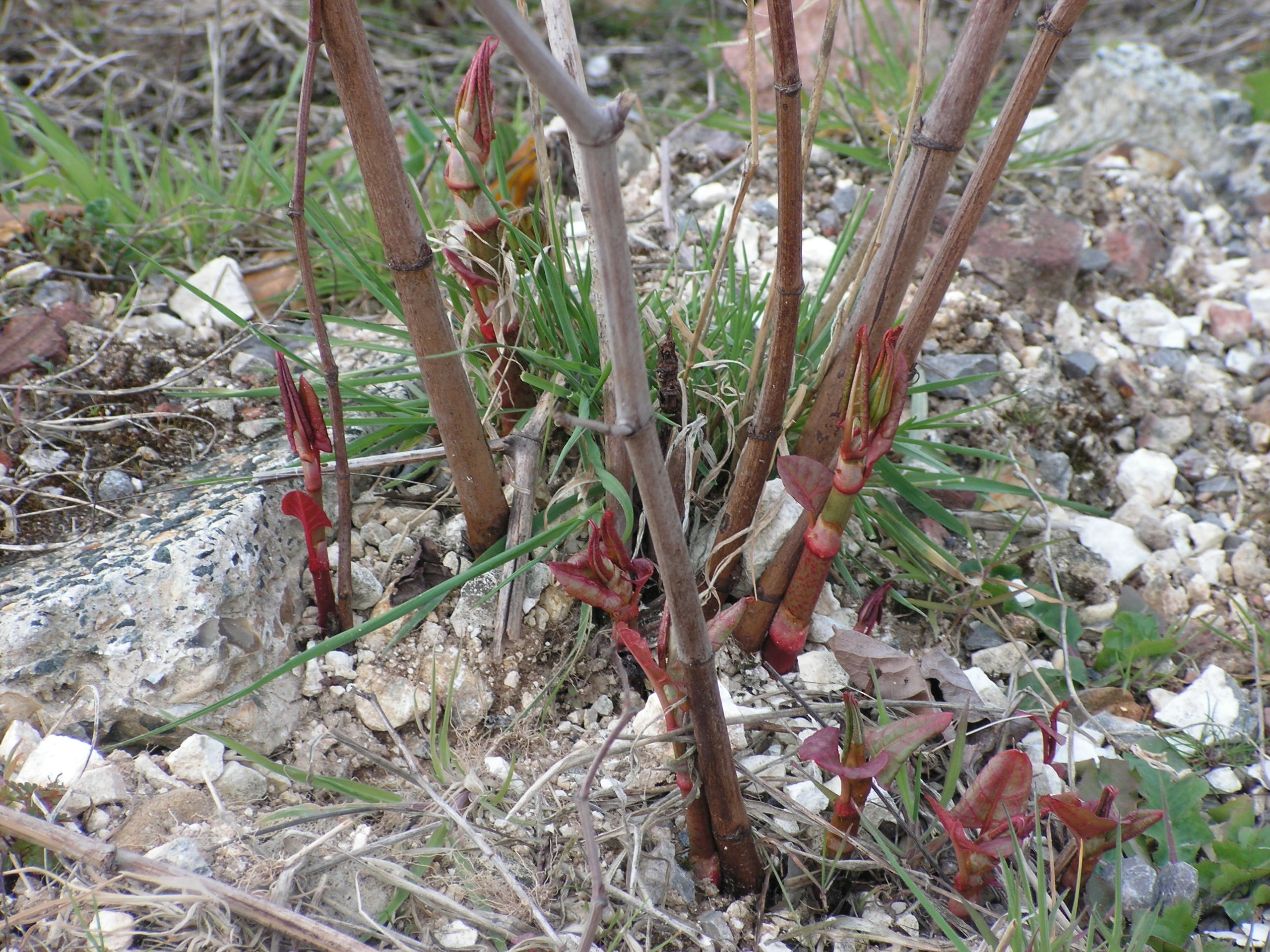Free Japanese knotweed Identification
Our free online identification is quick and easy to use. Upload pictures of suspected Japanese knotweed and we will correctly identify whether you have knotweed or not.


All your questions about this invasive species answered; how it arrived in the UK, what makes it so problematic, and the issues Japanese knotweed causes. Discover how to get rid of knotweed and a few other interesting things you may not know.
Japanese knotweed (Fallopia japonica) is one of the most invasive and destructive plants in the UK and if it’s growing on or near your property, you need to take action immediately. Known for its rapid growth and relentless spread, Japanese knotweed can cause costly damage to above ground structures and underground infrastructure. Its powerful underground rhizomes can spread several metres in every direction, making complete removal extremely difficult without professional help.
Because it’s a controlled plant under the Wildlife and Countryside Act 1981, property owners have a legal duty to prevent its spread and failure to do so can lead to devalued property, mortgage refusals, and even legal penalties.
The only effective solution is a professional Japanese knotweed survey and treatment or removal plan, carried out by qualified, PCA-accredited contractors who can safely identify, manage, and eradicate the infestation with long-term guarantees.
Page last reviewed 30.10.2025
Japanese Knotweed (Reynoutria japonica syn. Fallopia japonica) is a fast-growing clump-forming invasive perennial weed that can cause damage to structures and property. It was originally discovered by the Dutch naturalist Maarten Houttuyn in the 18th-Century, who gave it the name it still has today; Reynoutria japonica. Do we have Japanese knotweed under control in the UK? It’s an ongoing issue, and we’re here to help.
The Environment Agency deems Japanese knotweed as the most common of 4 invasive knotweed plant species in the UK, which are:

Key features are the zig-zag stem structure, ‘shovel’ shaped leaves and white flowers that emerge in summer. The stems can grow up to 7ft high. In winter it looks completely different with only dark brownish red stems being visible above ground. Knotweed spreads via underground root system (Rhizomes).
More on how to identify knotweed through the seasons here.
In the UK, we only have the ‘female version’ of the plant. The Japanese knotweed root or ‘creeping rootstalk’ form horizontal underground plant stems that produce shoots and root systems that form new plants.


As disturbance to the rhizome will generate new growth, this is a real problem for commercial or private land developers. Ignoring knotweed can result in regrowth during or after construction, appearing through hard and soft landscape areas causing issues for new homeowners.
if the necessary due diligence and control of Japanese knotweed has not been undertaken, the developers risk legal action for Professional Negligence. Ignoring knotweed can result in regrowth during or after construction, appearing on the property long after the site has been handed over to a Managing Agent – thus causing issues for the Agent and homeowners alike.
If knotweed is identified on a development site all works have to be stopped until a full survey and treatment or eradication has taken place. The location of knotweed must be recorded for future land sales.

It has been estimated that over 2% of development sites and 1.25% of residential properties in Great Britain are affected by Japanese knotweed, amounting to tens of thousands of sites in total. Evidence of knotweed on property can have a negative impact on its value.
Since 2013, when selling a property the seller is required to state whether Japanese knotweed is present on their property by ticking a box on the TA6 form – a property information form used for conveyancing. Failure to do so, or to make a false statement is deemed an illegal act that has consequences such as the seller being sued for ‘misrepresentation’.
If a professional survey is carried out and knotweed is either missed or mis-identified this is classed as ‘Professional negligence’ and can lead to a legal case and potentially a fine.

Property and land owners should make every effort to control and prevent knotweed from spreading onto a neighbouring property as this is deemed as encroachment even if just the underground rhizome of the plant is found to have spread from one property to another.
Actionable private nuisance claims can be served against persons found responsible for having allowed or caused encroachment to take place. A private nuisance is an act or omission which is an interference with, disturbance of or annoyance to a person in the exercise or enjoyment of his ownership or occupation of land, and can lead to legal action or even a court case.

The Environment Agency states that once you find Japanese knotweed on private land or commercial development site, it is essential that you set up a Knotweed Management Plan (KMP). The presence of knotweed does not automatically prevent a mortgage from being obtained. A lot of mortgage lenders will agree if there is evidence of a suitable KMP ain place.
It’s the survey findings that will go on to form a documented KMP for the property and it should include picture evidence of Japanese knotweed (or other invasive weeds) found onsite, a site drawing locating the knotweed and a recommended plan of action for remediation. The quotation within the plan may include several methods depending on the site. If there are known change of land use proposals for the property, these will also be evaluated to decide the appropriate control method.

There are two main methods of control used in the industry: Herbicide treatments (usually via a programme) and Excavation. Although several new methods are being trialled by some companies, such as hot foam, steam or electrical usage, there is not enough evidence that these are as effective long-term and may cost more than herbicide and excavation.
At JKL we use the best and most cost-effective options for each client, based on their needs and the land use requirements, this can mean a bespoke plan using several methods. We have several methods of excavation, including vacuum excavation which is used on sites where either environmental aspects (trees or endangered species) or utilities (pipes and cables) need to be considered.
With excavation the knotweed waste material can be left onsite if using an approved method such as cell burial, or completely removed and taken to an approved landfill site that is licensed to receive knotweed waste material.

If the Japanese knotweed infestation is left unchecked for several years, it can spread and cause a range of issues including:
Or simply find out why KNOTWEED IS NOT TO BE IGNORED!

The disposal of Japanese knotweed and other invasive weeds listed under section 14(2), schedule 9, part II of the Wildlife and Countryside Act, is legislated. Under the Environmental Protection Act, waste containing the propagules of these plants is classified as controlled waste if removed from site of origin. This still applies to all knotweed material after treatment or excavation, and requires the waste to be transported only on Environment Agency registered waste carrier vehicles and disposed of at specially licensed landfill sites (of which there are limited numbers in the UK).
Where there is an option to retain or dispose of these wastes on-site, it needs to be done in accordance with the Government’s Regulatory Position Statement (RPS) number 178. This controls how the waste can be kept and disposed of on-site, with specifications for burial, relocation and re-use.

Environmental Protection (Duty of Care) Regulations 1991
This Act exists to ensure responsibility is taken by the producers of waste (such as Japanese knotweed) for managing their waste and avoiding harm to human health or the environment. It aims to reduce or eradicate harmful acts of waste crime, such as fly-tipping. The Duty of Care incorporates a responsibility on anyone who produces, imports, carries, keeps, treats or disposes of controlled waste to ensure it is only ever transferred to someone who is authorised to receive it. Read more on The Environmental Protection (Duty of Care) Regulations 1991.
The Wildlife and Countryside Act 1981
The Act provides the primary control for the release of non-native species into the wild in Great Britain. It is an offence under Section 14(2) of the Act to “plant or otherwise cause to grow in the wild” any plants listed in Schedule 9, Part II.. Read more about the Wildlife and Countryside Act 1981.


The Royal Institution of Chartered Surveyors (RICS) Guidance Note published in January 2022, on which our Director Ben Lindley is directly named as a contributor set the standard by which Japanese knotweed is controlled. The RICS’ Standard was governed and overseen by the Standards and Regulation Board (SRB), whose aim is to develop the ethical and competence of the profession and set standards for service delivery.
The new Note was later superseded by a new document that was reissued in October 2022 as a Professional Standard, however the principals outlined in the document remained the same.
The RICS information paper 2012 established a framework for assessing the risk to residential property posed by Japanese knotweed. It specified four risk categories (1-4), using a distance of 7m from buildings and boundaries as the defining measurement. Along with asking for an assessment on minor or major structural damage. The information paper was instrumental in providing a rationale that enabled lending on residential properties impacted by knotweed.
Since the original information paper was published in 2012, academic research into Japanese knotweed has been published that has influenced a review of property impact guidance and development of the new Guidance Note.
In 2018 a research paper by Fennell et al from the University of Leeds reported that typical rhizome spread was 3m, opening consideration for a different defining distance measurement to 7m. The paper also reported that cases of material damage to a structure were only likely when knotweed was immediately adjacent to susceptible structures.
A further research project by Jones et al from the University of Swansea published findings in 2018 on the optimum method of controlling Japanese knotweed with herbicides. Control of an infestation was readily achievable when properly undertaken. However, fast results or total eradication were not recognised as readily attainable from herbicide only treatment methodologies.
In 2019, the House of Commons Science and Technology Committee published a report on an enquiry titled ‘Japanese knotweed and the built environment’. The enquiry had been promoted by the publication of the research papers and a growing litigation industry surrounding knotweed.
Japanese Knotweed Ltd provided written evidence to assist with the enquiry, and a company Director, Ben Lindley, was invited to provide oral evidence at the committee meeting, along with seven other industry stakeholders.
The Technology Committee report made recommendations, one of which was for the RICS to review its guidance on knotweed. The report described the ‘7m rule’ as a blunt instrument that did not reflect the latest scientific evidence. It called for a revised assessment process which was ‘much more nuanced and evidence-based … to reflect the latest thinking on the significance of Japanese knotweed’.
The RICS Guidance Note “Japanese Knotweed and Residential Property” 2022, is the result of the requested re-assessment.
The RICS Guidance Note provides an updated assessment for RICS members in conducting their surveys and valuations.
The guidance takes onboard previously published research into Japanese knotweed. Modifying the associated property impact assessment, which advises lenders on needing to apply mortgage retention or not.
When advising for non-lending purposes the property surveyor will always advise the client to seek advice from a specialist remediation contractor about the Japanese knotweed.
The contractors’ trade association (the PCA Invasive Weeds Control Group) have produced a more detailed assessment of impact and remediation recommendations in their associated Guidance Note ‘Japanese Knotweed – Guidance for Professional Valuers and Surveyors’.
A specialist remediation contractor, such as Japanese Knotweed Ltd, will advise clients of the specific impact knotweed may have on a property, such as loss of free use, maintenance restrictions, limitations on development, waste disposal costs, and potential litigation impacts.
A specialist remediation contractor will recommend the appropriate remedial action to take, such as herbicide treatment or excavation under a Knotweed Management Plan for any property affected by knotweed and offer the provision of an Insurance Backed Guarantee.
So, ‘Caveat emptor’ buyer beware and as advised by the RICS Guidance Note management categories, always seek advice from a specialist remediation contractor, such as Japanese Knotweed Ltd, when looking to sell or buy property impacted by Japanese knotweed.
Originating from Japan (hence the name), every Japanese knotweed plant in the UK derives from one single plant that was introduced by Philip von Siebold in 1850. He was unaware of the environmental impact this plant would go on to have.
Knotweed was originally used as an ornamental plant, sold for commercial and botanical cultivation. The plant began to spread after Siebold sent samples back to his native home in Norway, and eventually the cultivated plants were sent back to Kew Gardens.
Its quick growth was soon noticed by Kew, who then started to sell the plants for residential garden use. The rest as they say – is history! When it was first identified as being a Non-Native Invasive it was already spreading across the country. Japanese knotweed now grows across almost all areas of the UK, and is currently most prolific in Wales.
